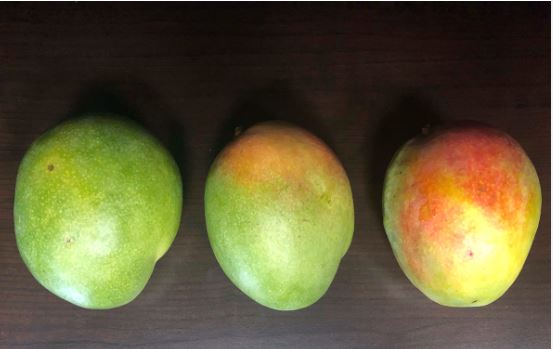Ripe Mango vs. Unripe Mango: Understanding the Differences and Benefits
Mangoes, with their sweet and tropical flavor, are a popular fruit enjoyed by many worldwide. However, when it comes to choosing a mango, the stage of ripeness plays a significant role in taste, texture, and culinary applications. In this article, we will explore the differences between ripe and unripe mangoes, including their appearance, flavor, and potential uses. By understanding the characteristics of both stages, you can make informed decisions when selecting mangoes for your recipes and enjoy them at their best.

Mango fruit
I. Identifying Ripe Mangoes
1. Visual Cues: Ripe mangoes exhibit vibrant colors, such as shades of yellow, orange, or red. They may also have a slightly wrinkled skin and a fragrant aroma near the stem.
2. Texture and Firmness: When gently pressed, ripe mangoes should give slightly, indicating a soft and juicy interior. The flesh should be smooth and free from any fibrous or tough textures.
II. Recognizing Unripe Mangoes
1. Visual Cues: Unripe mangoes are typically green in color, with little to no color change on the skin. They may have a smooth and shiny appearance.
2. Firmness and Texture: Unripe mangoes are firmer to the touch and may feel slightly hard. The flesh tends to be less juicy and may have a more fibrous texture compared to ripe mangoes.
III. Flavor Profiles
1. Ripe Mango Flavor: Ripe mangoes are known for their sweet, juicy, and tropical flavor. They offer a balance of sweetness and acidity, with nuances of floral and citrus notes.
2. Unripe Mango Flavor: Unripe mangoes have a tangier and more tart flavor profile. They are less sweet and can sometimes be slightly astringent or sour.
IV. Culinary Uses
1. Ripe Mango Culinary Applications: Ripe mangoes are perfect for eating fresh as a snack, adding to fruit salads, blending into smoothies, or incorporating into desserts like mango salsa or mango ice cream.
2. Unripe Mango Culinary Applications: Unripe mangoes are commonly used in savory dishes and pickles. They can be grated or sliced to add a tangy and slightly sour element to salads, chutneys, or marinades.
V. Nutritional Benefits
1. Ripe Mango Nutrition: Ripe mangoes are a rich source of vitamins, minerals, and antioxidants. They provide dietary fiber, vitamin C, vitamin A, and potassium, supporting overall health and immune function.
2. Unripe Mango Nutrition: Unripe mangoes contain higher levels of starch and dietary fiber. They are also a good source of vitamin C and contain enzymes that aid digestion.

Ripe mango vs unripe
Understanding the differences between ripe and unripe mangoes empowers you to make the most of this delicious fruit. Ripe mangoes offer a sweet and juicy flavor, ideal for enjoying fresh or incorporating into a variety of sweet dishes. On the other hand, unripe mangoes provide a tangy and slightly sour taste, perfect for adding a unique twist to savory recipes. By considering the ripeness stage and desired flavor profile, you can select the right mangoes for your culinary endeavors and savor their distinct characteristics and nutritional benefits.